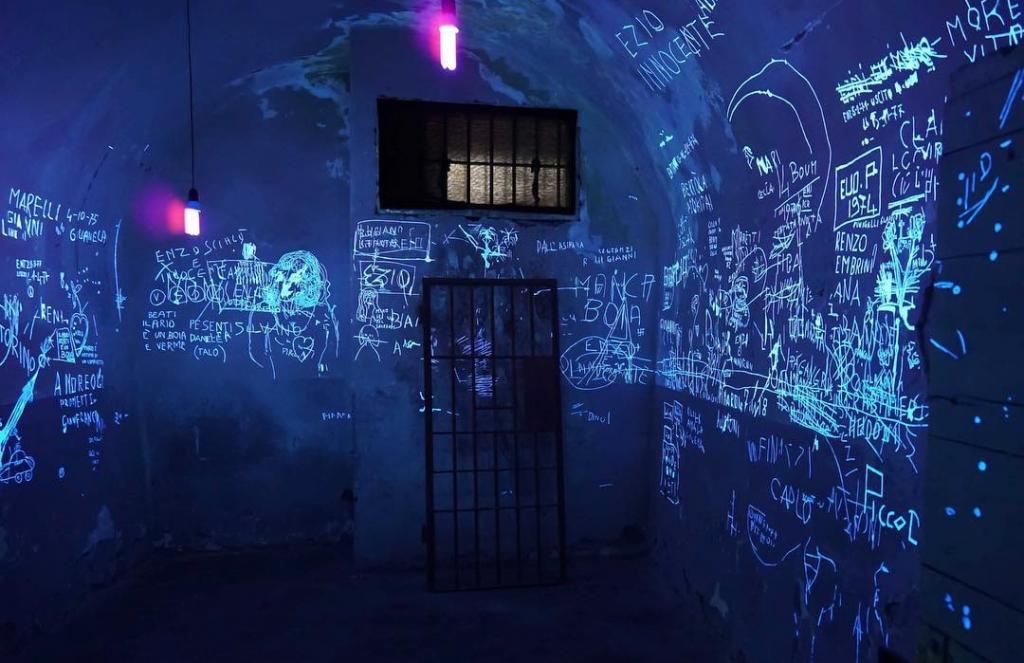Thessaloniki gets ready for its metro launch in November
The underground rapid transit lines have been under construction for almost two decades due to various project delays
 TheMayor.EU logo
TheMayor.EU logo 
Ex-prison cell turned into an artwork by highlighting the wall graffiti left by its past inhabitants, Source: BaBeLe project site
Multi-layered showcase that illustrates several good practices from the municipal world
Transforming abandoned spaces to new uses has been one of the trends that have taken over European cities, eager to inject new life into their heritage. This practice leaves plenty of space for creative solutions and pays homage to the past – but why is that even important? And how can public space regeneration be truly beneficial for the communities where it takes place?
We can find possible answers to these questions in the ExSA project, which is taking place in the Italian city of Bergamo. In a nutshell, the plan is to convert a former prison to a socio-cultural centre. Yet, it is also more than just that. Unravelling its layers shows us a story of inter-municipal, even inter-regional borrowing of ideas and rejuvenation of spirit.
ExSA is one side of a larger project called ‘BaBeLe. Bari – Bergamo Local Energy’, which seeks to implement an exchange of good practices of youth social innovation between the two Italian municipalities. It also involves non-profit organizations from these cities as the engine drivers behind the transformation.
Additionally, it speaks to the particular Italian context. ExSA is an example of a northern city learning from and borrowing a good practice from a southern counterpart, with the implication in that country that development ideas had always flown in the opposite direction in the Apennines.
Bari reconverted a disused middle school building as a creative hub for young people. Bergamo decided to do something along these lines but for the Sant’ Agata former monastery and prison – a building with a long history that had been falling into disrepair since the early 1980s after it stopped serving as incarceration space.
Its origins go back to the Middle Ages and located on a plateau and overlooking the Citta Alta (the old section of Bergamo) it has been inscribed into the perception of the local community of their city for ages. But not anymore. The younger generations do not associate it with anything anymore, or at least not with anything positive.
That is a growing problem for communities that inhabit the historic quarters of cities, which are increasingly reliant on tourism for their economic survival. Ironically, that tourism also ends up erasing their original identities – the ‘hit and run’ effect that short-term visitors tend to cause on such places.
The ExSA project intends to work to ensure that citizens re-appropriate one of the many abandoned places in their neighbourhood, making it a "community incubator" - a space for participation in which the inhabitants of the Citta Alta recognize themselves. A place that is open, inclusive and welcoming, flexible and constantly listening to collective needs and desires.
The spaces of ExSA become a place of relationship through initiatives of meeting and comparison both in continuity with the programs that are already active and through innovative proposals, which use different methods and languages.
The desired and wished-for effect is that the new generation of locals can embrace the space, inscribing it with their own communal memory and giving it a new reason to thrive in this age.
This article was prepared with contributions from our reader Chiara Brigida Tadolti.

The underground rapid transit lines have been under construction for almost two decades due to various project delays

Now you can get your wine in Talence by paying directly in Bitcoin

That’s because the state has to spend money on updating the railway infrastructure rather than subsidizing the cost of the popular pass

Rethinking renewable energy sources for the urban landscape

The examples, compiled by Beyond Fossil Fuels, can inform and inspire communities and entrepreneurs that still feel trepidation at the prospect of energy transition

Now you can get your wine in Talence by paying directly in Bitcoin

The 10th European Conference on Sustainable Cities and Towns (ESCT) sets the stage for stronger cooperation between the EU, national and local level to fast track Europe's transition to climate neutrality.

At least, that’s the promise made by the mayor of Paris, Anne Hidalgo

The underground rapid transit lines have been under construction for almost two decades due to various project delays

At least, that’s the promise made by the mayor of Paris, Anne Hidalgo

Hostal de Pinós is located in the geographical centre of the autonomous region

Despite its church-y name, the district has long been known as the hangout spot for the artsy crowds

Urban dwellers across the EU are having a say in making their surroundings friendlier to people and the environment.

Forests in the EU can help green the European construction industry and bolster a continent-wide push for architectural improvements.

Apply by 10 November and do your part for the transformation of European public spaces

An interview with the Mayor of a Polish city that seeks to reinvent itself

An interview with the newly elected ICLEI President and Mayor of Malmö

A conversation with the Mayor of Lisbon about the spirit and dimensions of innovation present in the Portuguese capital














